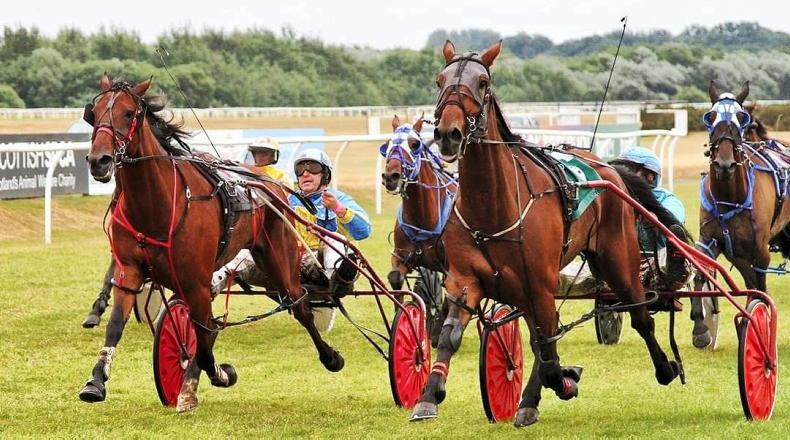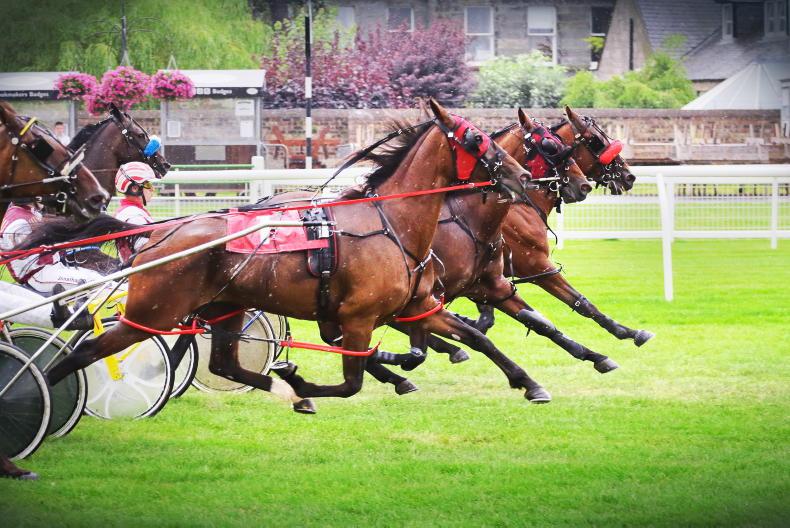THE Famous Musselburgh Pace (est. 1894) will be revived on June 14th of this year. The 127-year-old fixture looked to be gone forever, when a combination of circumstances meant that harness racing was discontinued in 2021.
Sadly, this column has reported in the past seven years on the loss of Musselburgh and the closure of Portmarnock Raceway in this country and the lively Corbie Wood (Stirling, Scotland).
No event or track is sacred in these days of increased running costs and high land values. Freehold Raceway in New Jersey recently closed after 170 years.
Therefore, it is a refreshing change to publish an ‘extra ‘fixture’, something new and positive. There has been a strong Irish connection to this meeting since McCune brothers of Belfast brought the first Irish runner (Easter Surprise, 1976).
John Nixon’s The Lucky One was the first Irish winner (albeit a dead-heat) in 1985. To be precise, there have been seven Irish connected winners since that breakthrough.
Darren Owen, the respected commentator, cut his teeth calling harness races near his home village of St Asaph in North Wales. Nowadays, he is a recognised voice at flat and jumps meetings alike. Darren has not forgotten his roots and always rallies round when the British Harness Racing Club come calling.
Darren was approached about the possibility of bringing harness racing back to the East Lothian venue. The BHRC have replaced the former Fair Day Committee and have set up a 10-strong sub-committee to steer the 2025 relaunch.
Each of the members is ‘above reproach like Caesar’s wife’; Darren himself, Jason Podmore (BHRC) who is heading the committee, Ryan O’Neil (STAGBI), Julie Park and Gareth Dowse (both BHRC), Ian Pimlott (Trot Britain), James O’Sullivan (IHRA) and Hamish Muirhead, Huw Evans and Eric Witherspoon, who promote other tracks in Scotland and Wales respectively.
Darren Owen told The Irish Field: “Musselburgh is now run by the same team as Chester racecourse. They were anxious to deal directly with the governing body.
“We are starting small and manageable, but there is a realistic chance of a two-day fixture in future if 2025 works. We intend to race for the original trophy. We will stage some trotting races too.”
Owen, who has called at Aintree and The Little Brown Jug (Ohio) went on: “We are hoping for a strong entry from Ireland. We urgently need a sponsors. There was outcry in 2021, when the meeting looked to be lost – so our community must unite and get behind ‘the glittering jewel’ in the harness racing crown.”
Changes over the years
A bit like the Grand National, the Famous Musselburgh Pace was regarded as a tough test of a horse, but with one thing and another, has been watered down.
The single greatest change was when the old tape start was done away with. The average field size was 12.
Twelve tapes of heavy elastic with a metal fitting were stretched across the track at 12-yard intervals back from the start pole. The weaker or slower horses started at the ‘go’ pole, known as ‘scratch’, in Edwardian times. Meanwhile, halfway up the long stretch, top-class pacers such as Lydia M or Billy Adios were dots on the horizon in the 12 seconds (144 yards, in effect) box.
As soon as each horse had settled in his allocated ‘box’. The horses circled, some demurely like a lead rein pony, some sweaty and fired up. The commentator of the day, Peter Deighton counted down from ‘10’... 5,4,3,2,1... Go! At this point, an automatic switch released all 12 tapes, which flew across the track with a clack, as the metal rings hit the far rail.
Prior to 1998, there were many hard luck stories. Some horses might be facing the wrong way as the tapes went back.
Some horses would spook or rear at the sight and sounds of the elastic flying across their line of vision.
On the other hand, some professionals, such as Ian Pimlott of Manchester, taught horses to burst through the tape with their chest. Enough said.
At one time, heat winners only went on to the final. Changes to the grading system meant that in 2021, the first three finishers went forward.
The distance is ‘one mile, three furlongs and 85 yards’ again, most UK harness races are over the dead mile. Finally, the road crossing, a smaller Melling Road, has caused many a good thing to gallop.
More recently, the pacers have been moved from the main track to an inside track and a starting car is used. The races are right-handed, whereas 99% of races in Britain and Ireland are left-handed. No wonder the Musselburgh pace once boasted 50 bookies!

History aplenty
As you would expect with a race dating back to the 19th century, there is a rich history. An old local by-law dictated that local householders and businessmen could trot their work horses and ponies on the racecourse once a year and so ‘Musselburgh Fair Day’ was born.
The names of the early winners are more reminiscent of a milkman’s cob than Somebeachsomewhere. Here’s a few from the early years: Lily, Nettie, Wee Eck and Jeanie.
By the time of the inter-war years, some of the big stables from the Midlands and London were travelling. Miss Doris in 1939 became the first back-to-back winner. The 1940 winner Gold Digger was later bought by Belfast man, Artie Cleland.
In the 1960s, stars such as Samuel and Cheerio (full brothers) and the finer US-breds, Maketime and Coles Star, got their name on the trophy.
The 1973 winner, Saunders Leopard travelled eight hours from a backwater named ‘Tregaron’ in mid-Wales and prompted a BHRC enquiry, which lasted 18 months.
Ian Pimlott, known as Mister Musselburgh, won the coveted trophy eight times from 1974 to 1992.
Wily Scot, John Menzies, took home the Famous Musselburgh Pace Trophy five times.
In 1979, he had six unsuccessful drives before, on his last drive of the day, he qualified Eastwood Limelight for the final. She was in foal and duly won. The foal was christened I Was There.
The veteran stallion, Saunders Emerald, had an unusual win in 1981, with his son Kevock Rice in second place.
First lady
In 1992, Helen Morton (neé Kerr) became the first lady driver to lift the cup. She drove Red Governess, imported from the US in her dam’s womb.
Direct Dream (2003) was only the second dual winner in the existence. No horse has managed three-in-a-row.
Porterstown Thierry, trained by Billy Roche, won the meeting’s lower grade final and landed a monster gamble in 2005.
In 2013, Springhill Alibi ensured that the famous trophy was displayed the following Friday at Murdock’s fruit stall in St George’s Market, Belfast.
Alibi was trained by Alexis Laidler, who has dominated in recent years. The Laidlers won the 2021 race with Merrington Moving Up, who was an orphan foal.
In the new millennium, raiders from this side of the Irish Sea, such as Klondyke Girl, Ambro Lobell, Doonbeg and Kikicolt and For A Few Dollars More all left stories of big achievement.
For sponsorship enquiries contact + 44 7834 539292
“To win at Musselburgh, it was our Cheltenham,” Patrick Kane jnr
“It’s been the Mecca of our sport since I was a kid. I can’t wait to get back,” Gavin Murdock
“The atmosphere in the winner’s circle cannot be matched,” John Roche
“To get your horse’s name on that famous trophy, it doesn’t get better than that,” Peter Lyttle
“This will give the sport a much-needed morale boost in Scotland,” Gregor Menzies, Falkirk
“Musselburgh is known as ‘The Honest Toun’ (sic). The race is the most prestigious prize in British harness racing,” Bernard McGovern, Dundee
With thanks to Julie Park and Bernard McGovern, who provided statistics.


 This is a subscriber-only article
This is a subscriber-only article
 It looks like you're browsing in private mode
It looks like you're browsing in private mode






SHARING OPTIONS: